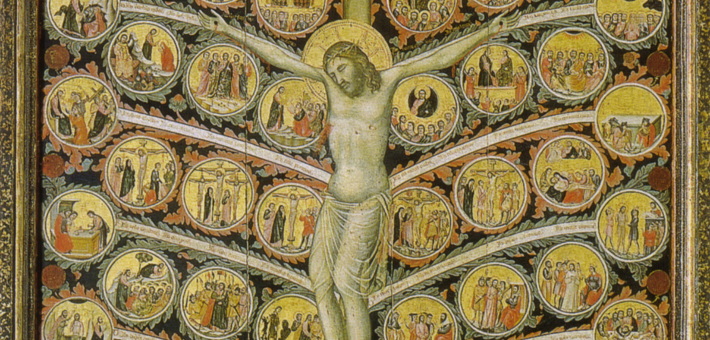Commentary on Hebrews 10:16-25
As we enter this text from the letter to the Hebrews, we are late to church, showing up in the middle of the climax of a sermon. Up to this point, the author/preacher has been building a rather intricate doctrinal argument about the life, suffering, death, and high priesthood of Christ. As Fred Craddock suggests, “Once inside [the book of Hebrews], the reader never relaxes, never quite feels at home. The paragraphs are not written in such a way that they can easily be extracted for devotional or sermonic use; rather, they are carefully linked in one long sustained argument. The furniture seems permanently in place.”1
And yet, we have gifted to us an excised pericope that bridges the conclusion of a section of doctrinal exposition into the beginning of a long section of application or exhortation. It is a climactic, yet odd transition point in the Hebrews homily. And to make this text selection even more interesting, the architects of the lectionary opted to place this reading on Good Friday.
While most preachers may select the Gospel story of Jesus’ trial and crucifixion as their primary preaching text (understandably so!), there is a strong case to be made for the inclusion and preaching of this text from Hebrews on Good Friday. At first glance, connections might be made to the Gospel story through the images and language of blood and the ripped curtain of the temple. However, there is something more significant happening in this text than the repetition or reappropriation of crucifixion imagery. At its heart, this text is a word of encouragement and pastoral care amid a world marked by death-dealing powers and crucifixion-shaped realities.
While the makeup of the original audience of this letter is debated among scholars, the content of the biblical text makes clear that this second-generation faith community was struggling. There are indications that some members were no longer gathering to worship regularly (10:25). The community seems to be demoralized as the writer warns against acquiescing to “drooping hands” and “weak knees” (12:12).2
The community was possibly wavering under the disappointment of the delay of the final return of Christ that had been promised (10:25, 35–39). While there is no indication that anyone in the community had been killed for the faith, the author does indicate situations of “persecution” (10:33), “hostility” (12:3), and “torture” (13:13). There seems to be apathy and disappointment within the community and pressure from beyond the community that made this path of faith seem less and less worth it.
Given these circumstances, the writer of Hebrews opts to respond with this christological, complex homily. But underneath the sophisticated Greek, Hellenistic theological constructions, and strong exhortative language, this letter/homily is, at heart, an act of pastoral care. The author knows the struggles of the community and fears that the community is tempted to abandon the faith. But the author also is confident that the community has the capacity to sustain compassion, generosity, and boldness in faith through present trials as they have in the past (10:32–36). And so the author offers them guidance and encouragement for the present and future, grounded in the person of Jesus the Christ as model and high priest.
The pericope begins with language borrowed from Jeremiah 31 that serves as a summary or capstone to the expository section of the sermon, reminding the community of the promise of the new covenant and full forgiveness that has been inaugurated by the crucifixion and resurrection of Christ, who now reigns as high priest.
After this expository summary, the author moves to unpack three key communal implications. In other words, the author moves to the “application” part of the sermon.
First, this final sacrifice and reign of Christ as high priest offer believers confidence that they can approach God with “a true heart in full assurance of faith” (10:22). This is a word for the present, reminding the community that, despite challenges and discouragements, they can approach God fully and without reservation. This is not because they are good or flawless, but because Christ has led the way on earth in his ministry and opened the way in his crucifixion and role as high priest.
There is also language in this admonition about having “our hearts sprinkled clean … and our bodies washed with pure water” (10:22), a reminder of their baptism and their identity as claimed by God. In short, the author is inviting the community to lean into the promises made in their baptism and the sustaining power of the crucified Christ. In so doing, they might sustain confidence in the faith when the ground seems to be shifting under them and their expectations remain unmet.
The second exhortation offered to the community is to “hold fast to the confession of our hope without wavering” (10:23). This is a word for the future, again grounded in Christ’s presence and work (“for he who has promised is faithful”). Notably, this exhortation acknowledges that while Christ reigns as high priest, the world is still broken and, as Fred Craddock suggests, “the final results of Christ’s work are not yet and there are many enemies” (Hebrews 10:13).3 There is something honest about this exhortation for the struggling community to whom the letter is addressed (and perhaps for us!). While it is an exhortation to hang on to hope, it implicitly acknowledges that this is hard work done in a broken world, thus requiring trust in Christ’s steadfastness.
The third exhortation in this pericope is to “consider how to provoke one another to love and good deeds” (10:24). The word translated “to provoke” in the New Revised Standard Version might even be translated “to pester.” If the first two exhortations were about how to position ourselves in disposition toward faith in a broken world, this exhortation is about action in everyday life. And it doesn’t simply call the community to do something, but to pester one another to do something—to engage in shared life, ministry, and worship. Put another way, our response to Christ’s life, death, and reign is not a solo effort but done in community. Christ’s “once and for all” work on the cross has communal implications for daily life.
In the end, the author of Hebrews knows that the community was growing tired and disillusioned under the stress of external persecution and internal disappointment. And while they invite the community to respond, it is never a call for them to lean on their own strength. The exhortations to have confidence in faith, hold on to hope, and pester one another toward love and communal care are all grounded in the person and work of Jesus Christ, the crucified high priest.
While this text might necessarily take a back seat to the Gospel text on Good Friday, I want to suggest that it should not be disregarded. Just perhaps, this is a word our communities need right now. After all, so many of our communities are struggling with political divisions, nonstop news cycles, disappointment about the state of the world, or natural disasters, concern over climate change, fear over economic realities.4 We are ministering and preaching among people who are growing weary and are increasingly pulling away from others, finding themselves lonely and separated from community.
Perhaps we need this sermon from Hebrews to hear proclaimed again an invitation to faith, hope, and love that is grounded in who Christ is and Christ’s sacrificial love for us. Perhaps, on this Good Friday, we need to be reminded that the life, death, and person of Jesus Christ still matter for our present, future, and everyday lives.
Notes
- Fred B. Craddock, “Introduction,” New Interpreter’s Bible, vol. 12 (Abingdon Press, 1998), 5.
- While used metaphorically to speak of the community’s spiritual condition, this is clearly ableist language that would need to be addressed, unpacked, or acknowledged by the preacher or interpreter.
- Craddock, “Hebrews 10:19–25 Commentary,” New Interpreter’s Bible, vol. 12 (Abingdon Press, 1998), 121.
- Kimberly Wagner, “When Good News Is Harder to Proclaim: Preaching amid Trauma,” Working Preacher, June 20, 2023, https://www.workingpreacher.org/culture/when-good-news-is-harder-to-proclaim-preaching-amid-trauma.


April 18, 2025